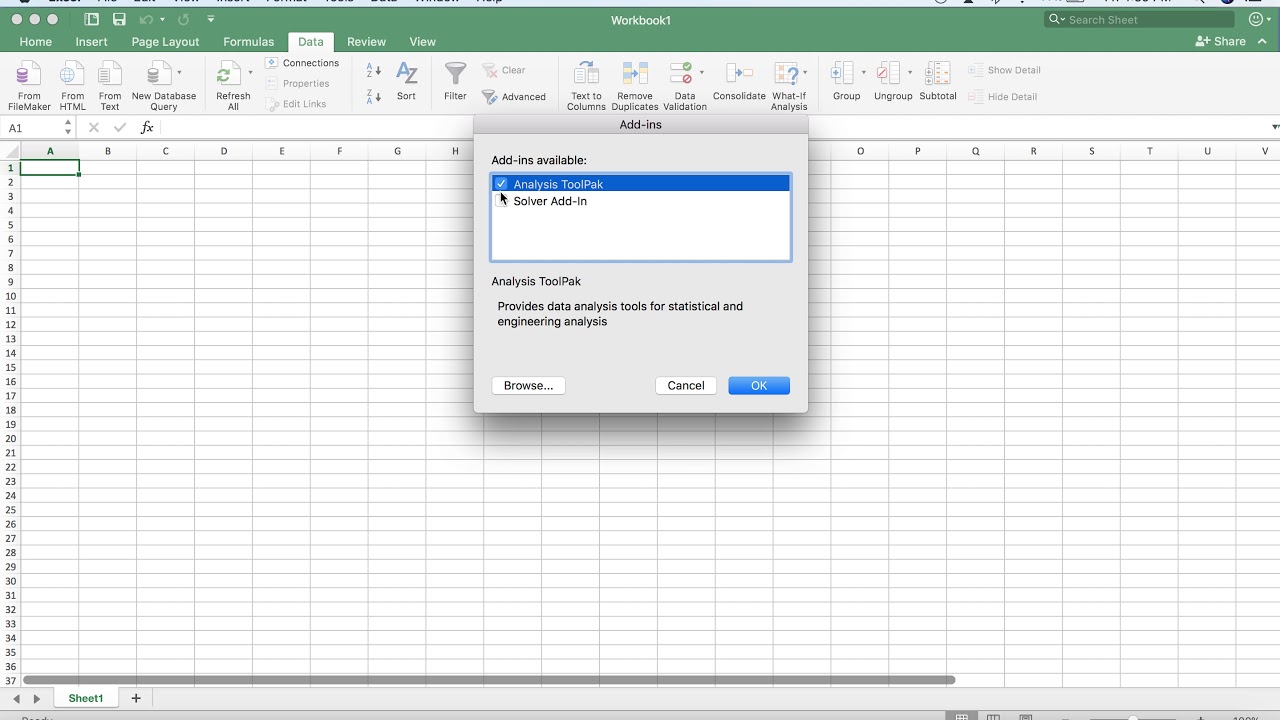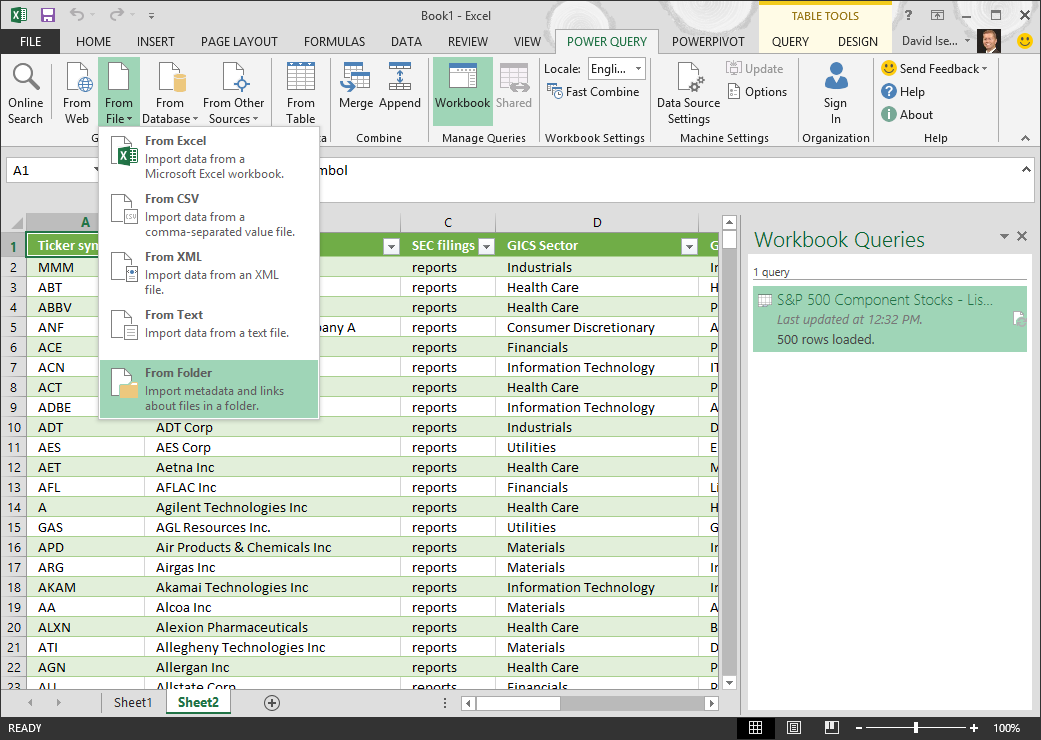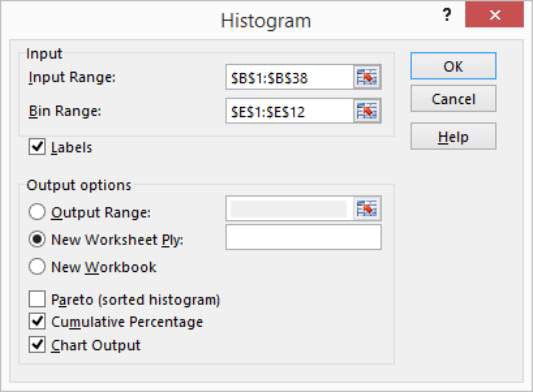

- #Get data analysis in excel for mac 2013 for free
- #Get data analysis in excel for mac 2013 how to
- #Get data analysis in excel for mac 2013 free
Click on Data Analysis to open the analysis tools available.ĥ. Once enabled the Data Analysis ToolPak will be located in the the Data tab all the way to the right. The Add-Ins window will open, add a checkmark to the check box next to Analysis ToolPak, click OK.Ĥ. At the bottom of the window select Excel Add-ins from the drop-down to the right of Manage:, click Go… to proceed.ģ. When the Excel Options window opens, click on Add-Ins located on the left pane. While Excel is open, click the Office button (the Orb) and click on Excel Options.Ģ.
#Get data analysis in excel for mac 2013 free
If you have any questions or comments, feel free to post them below.ġ.
#Get data analysis in excel for mac 2013 how to
I’m posting this quick how-to for those of you that don’t know how to enable it or even know where to locate it. The problem with the Excel add-in is that it is not loaded by default, this quickly became a problem for the professor teaching the class because he had to walk everyone through the process of enabling the powerful add-in. Once I enabled the add-in and learned how to use the tools it provided, I have not used any other statistical tool except perhaps Minitab, but then I use that for the more complex analysis. I stumbled on the Analysis ToolPak when I took an quantitative analysis class for my Masters program. You might face other challenges such as having dynamic starting rows or importing files with multiple worksheets.Excel like many of Microsoft’s other Office applications are extremely powerful tools that have many ‘hidden’ features. This is the first part of a mega post where I include all the possible scenarios of importing all files in a folder. Select Table and the destination of the results (New worksheet or Existing worksheet, then click on Load. Once enabled, Power Query functionality is available from the Power Query tab on the Excel ribbon. A dialog box will appear with three fields: Set cell: This is the cell that will contain the desired result. Selecting Goal Seek from the drop-down menu. That last link used to include loads of comments from disgruntled Office for Mac users, but Microsoft seems to have removed comment functionality from that help center article. From the Data tab, click the What-If Analysis command, then select Goal Seek from the drop-down menu.
#Get data analysis in excel for mac 2013 for free
although the add-in is no longer officially supported, you can still use it. Solution: Download StatPlus:mac LE for free from AnalystSoft, and then use StatPlus:mac LE with Excel 2011. For example, go to the ‘Region’ column and setup a filter to exclude the word ‘Region’. Power Query is a free add-in that can be downloaded here: Download the Power Query add-in. For example, you might want to put some prefix at the beginning of each cell, insert a special symbol at the end, or place certain text before a formula. When working with text data in Excel, you may sometimes need to add the same text to existing cells to make things clearer. For this you can go to any of the columns and remove the column name from the options. How to add text or character to every cell in Excel. The files will be imported with the headers, so you must remove them.

Step 2: Remove the headers from each file Once the data is imported it will look like this:

csv, go to the filter of the extension column and select. Important: If the folder contains files that are not. Then expand the content by clicking on the double arrow button. Once you click OK, press Edit on the next window.

Go to Data New Query From File From FolderĬlick on ‘Browse’ and browse for the folder that contain the files, then click OK.Īnother option (the one I generally use), is to copy the path of the folder and paste it on the folder path box. Step 1: Import all the files from the folder Follow these steps to import all CSV files in a folder If you have Excel 2010/2013, you need to download Power Query as a separate Add-in from this link. Note: For this post I’m using Excel 2016. To follow along, download the files from this link and unzip on your computer. The reason for this is that CSV files are flat files that are automatically appended one on top of each other using Power Query. Well, it turns out this is the simplest scenario of importing all files into Excel. Let’s say you have 50 CSV files in a folder and you need to import them into a single worksheet in Excel.


 0 kommentar(er)
0 kommentar(er)
